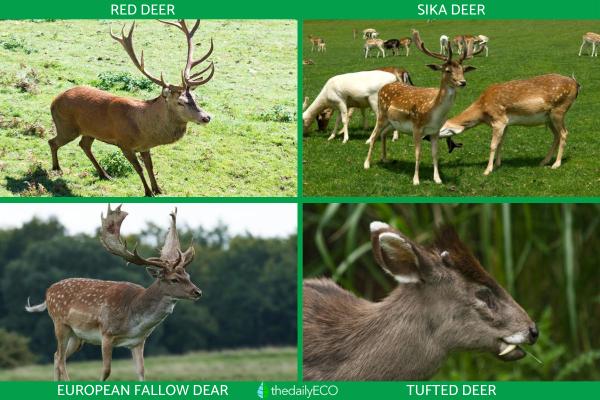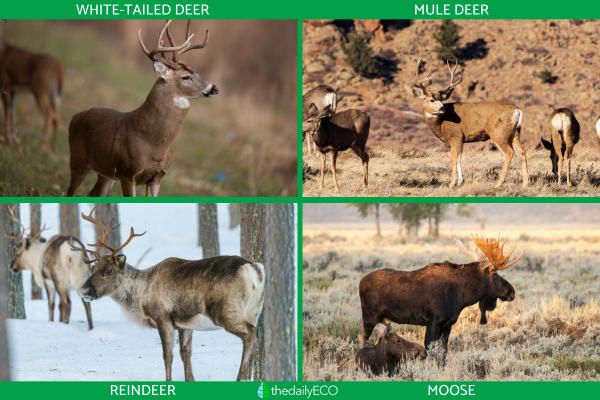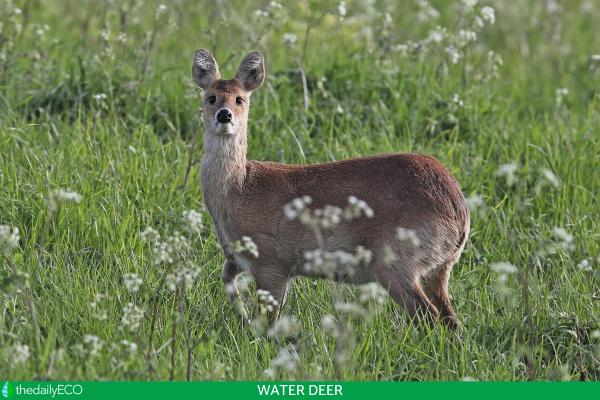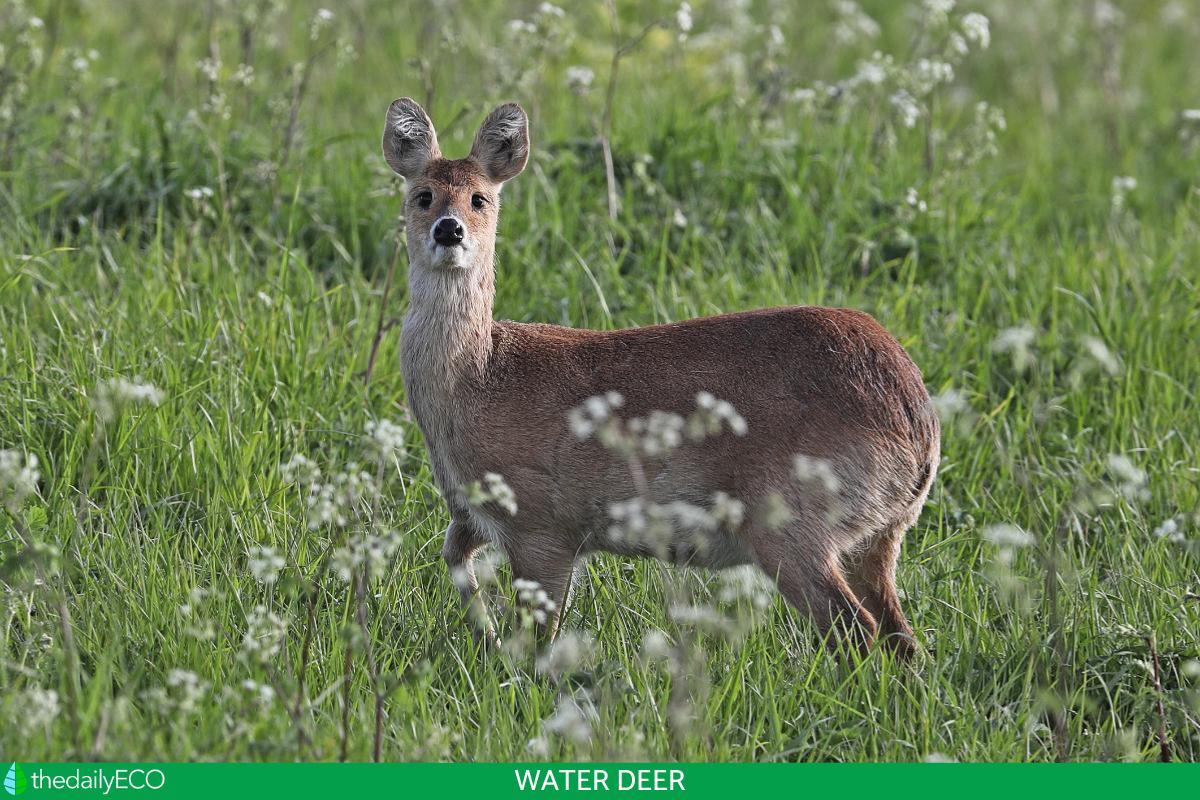What Kinds of Deer Are in the Family Cervidae?


Cervidae is a family of ungulate mammals which are commonly known as the deer family. While many of the individual species are known as deer, others include elk, moose, reindeer and other animals. Various characteristics define the various cervid types, such as being ruminants and the presence of antlers in males. These bony structures are used mainly for fighting rivals or for attracting a mate. Despite their similarities, they are an very diverse mammalian family.
To learn more about these ruminant ungulates, thedailyECO asks what kinds of deer are in the family Cervidae? We look at the subfamilies which make up this taxonomic family, as well as examples of individual deer species.
Taxonomic classification of cervids
Commonly known as deer, cervids belong to the Cervidae family. They are one of the most recognizable types of animal within the order Artiodactyla, being the second most diverse family after bovids. Deer are ungulate mammals, meaning they walk with the aid of hooves. Distinct characteristics include the presence of antlers on males of the species. The taxonomic classification of cervids is the following:
- Kingdom: Animalia
- Phylum: Chordata
- Class: Mammalia
- Order: Artiodactyla
- Family: Cervidae
There are two subfamilies of deer which contain various genera and individual species. They are:
- Cervinae
- Capreolinae
A third subfamily known as Hydropotinae was once accepted, but this is not longer officially recognized by most taxonomists. Learn more about how deer ae classified taxonomically with our article asking what are even-toed ungulates?
Old World deer (Capreolinae)
The subfamily Cervinae is commonly known as the Old World deer or plesiometacarpal deer. This subfamily of Cervidae includes species of cervids found primarily in Eurasia, although some have spread to other continents due to human introduction of populations. These kinds of deer are particularly interesting for their diversity in size, habitat and behavior.
The different kinds of Old World deer are adapted to a wide range of environments, such as the Himalayan mountains, temperate forests of Europe and tropical regions of Southeast Asia. Their ability to survive in a variety of climates and areas of vegetation types has contributed to their evolutionary success.
Sexual dimorphism is a prominent feature in all cervids. Males are usually significantly larger than females and possess developed antlers which they use during the mating season to compete for mates, as well as in other disputes.
A distinctive feature of some Old World deer is the combination of prominent antlers and canine teeth. In species such as the muntjac, males have small-but-well-defined antlers and long canines that may be used in territorial fighting. This trait is more common in types of Asian cervids.
Let's see what are some examples of Old World deer species:
Cervus genus
- Red deer (Cervus elaphus)
- Sika deer (Cervus nippon)
Dama genus
- European fallow deer (Dama dama species)
Elaphodus genus
- Tufted deer (Elaphodus cephalophus)
Regardless of their subfamily, all members of Cervidae are types of ruminant animals.

New World deer (Capreolinae)
The subfamily Capreolinae is known as the New World deer or telemetacarpal deer. They include species that are distributed primarily in North and South America, although some are also found in Eurasia. Capreolinae deer are distinguished from Old World deer by several anatomical features, ecological adaptations and particular behaviors.
New World deer have a wide distribution ranging from boreal regions of North America to tropical South America. Although in the minority, they also include species in Eurasia, such as the reindeer.
Generally speaking, they show less pronounced sexual dimorphism than Old World deer. Males are usually larger and have antlers, although these are less branched and straighter compared to those of Old World deer. New World deer are well adapted to a variety of climates, from frozen tundras to tropical rainforests.
Cervids of the subfamily Capreolinae are distributed mainly in North and South America. They are smaller in size to Old World deer, but usually have less branched antlers.
Let's look at some examples of species of New World deer:
Odocoileus genus
- White-tailed deer (Odocoileus virginianus)
- Mule deer (Odocoileus hemionus)
Rangifer genus
- Reindeer or caribou (Rangifer tarandus species)
Alces genus
- Moose or elk (Alces alces)
There is another type of Old World deer also known as elk in North America which is the species Cervus canadensis. Moose are sometimes known as elk outside of North America, leading to some confusion between the species. Learn more about these species with our article asking what are the different types of moose?
lthough the elk is also a large cervid in the Old World, it is included in this subfamily due to its distribution and biology characteristics. In this link you can learn more about the Elk: characteristics, types, where it lives and what it eats .

Water deer (Hydropotinae)
The subfamily Hydropotinae was compromised of only one living species, the water deer (Hydropotes inermis). There is good reason for previous thinking since this is the only kind of true deer which lacks antlers. In place of antlers, it has two large tusks which protrude from its mouth like teeth. For this reason, it is sometimes known as the vampire deer.
Water deer have have undergone genetic testing which shows they are part of the subfamily Capreolinae. This means they are New World deer and do not compromise their own subfamily, despite their distinct characteristics.
The Chinese water deer is found in specific areas of East Asia, mainly in China and Korea. It prefers living near different types of aquatic habitats such as riverbanks, swamps and flooded fields, hence their common name. Their tusks are used primarily in territorial fights or mating rituals. The water deer is relatively small compared to other cervids.
Discover another type of animal famed for its tusk with our article on what are monodontids?

Where do different kinds of deer live?
Cervidae is a family of mammals with an almost worldwide distribution. They are found on all continents except Australia and Antarctica, as well as certain oceanic islands. Their wide distribution reflects their ability to adapt to a variety of habitats, from frozen tundras to tropical rainforests.
This is the global distribution of deer:
- North and South America: in the Americas, different kinds of deer are found from the Arctic regions of Canada and Alaska to the subtropical and temperate zones of South America, such as the Andes and Patagonia.
- Eurasia: cervids are widely distributed in Eurasia, being found from the Arctic tundras of Siberia to the rainforests of Southeast Asia.
- Africa: cervids have a limited presence in Africa. The only member of the group present on this continent is the Barbary stag (Cervus elaphus barbarus), a subspecies of the red deer that inhabits North Africa.
- South Asia and Southeast Asia: these regions are an important centre of cervid diversity, with species adapted to tropical and subtropical climates .
In terms of deer habitats, members of the family Cervidae are extremely versatile and occupy a variety of terrestrial ecosystems. Their ability to adapt to different environmental conditions has allowed them to thrive in diverse areas. They can be found in places such as:
- Tundras and Arctic regions: they have dense coats to conserve heat, efficient metabolism to withstand extreme temperatures and large hooves that help them walk in snow or swamps.
- Boreal and temperate forests: flexible diets allow them to include bark and leaves during winter when greener foods are scarce.
- Tropical and subtropical forests: a small body size helps to move through dense vegetation and fur colorations allow them to camouflage themselves.
- Grasslands and savannas: long legs for running quickly and evading predators, as well as grazing habits adapted to open areas.
- Mountainous areas: they have adaptations such as specialized hooves for climbing rocky terrain and diets adapted to high altitude vegetation.
- Wet and aquatic ecosystems: these deer have swimming skills to move between islands or search for food in flooded areas.
If you want to learn more about animals which are related to deer, take a look at our article on the different types of gazelle species.
If you want to read similar articles to What Kinds of Deer Are in the Family Cervidae?, we recommend you visit our Wild animals category.








